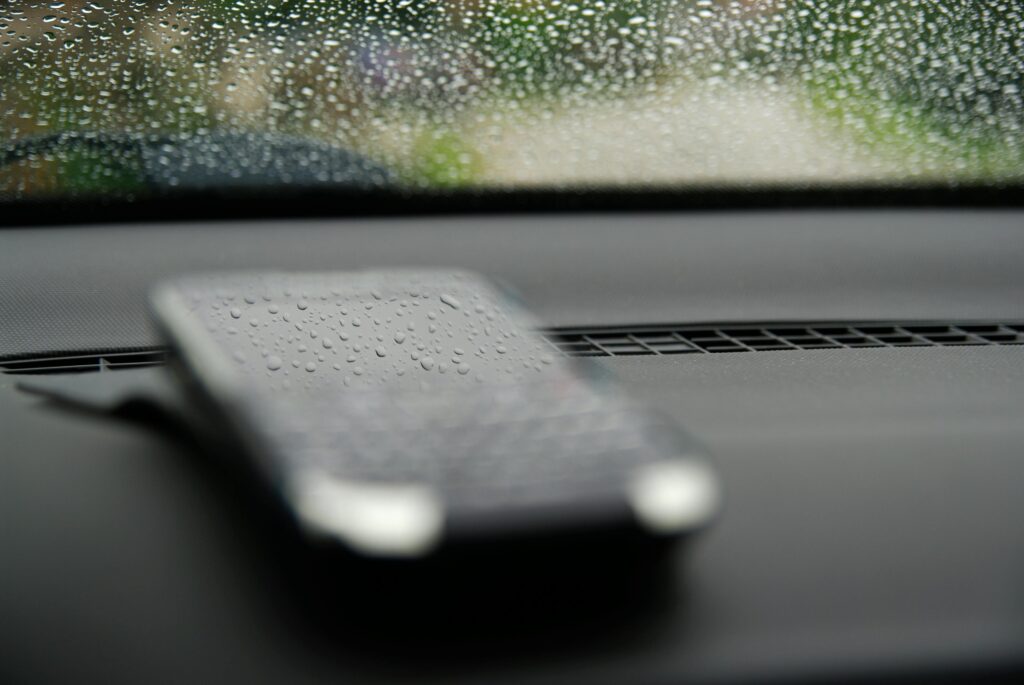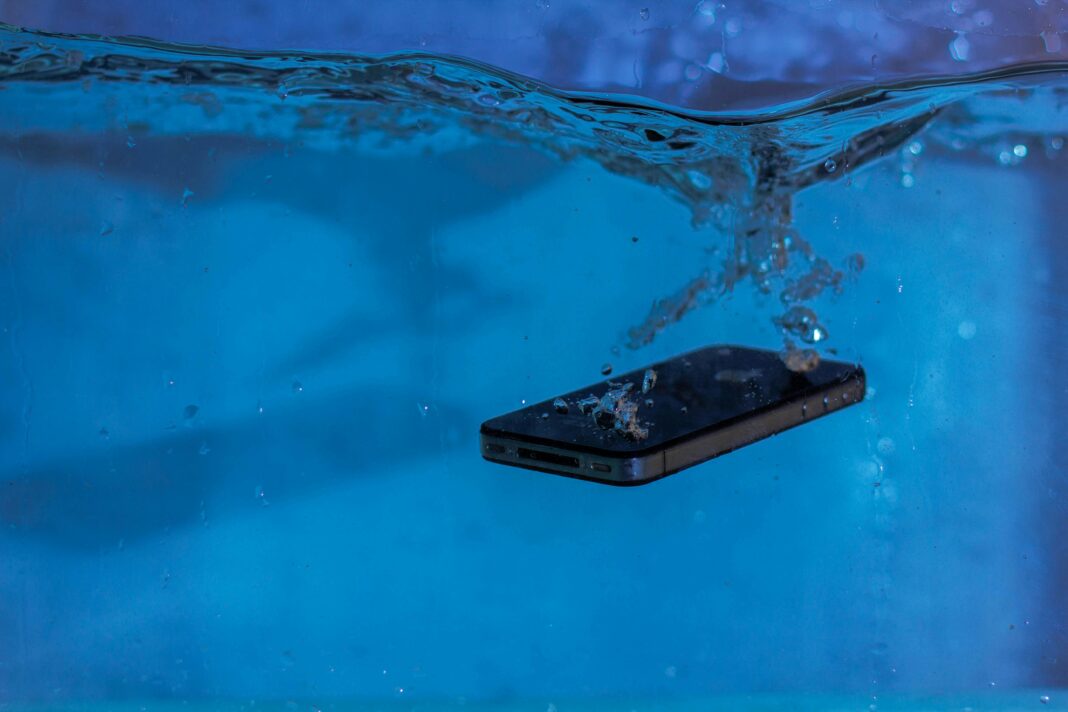Water damage is one of the most common and devastating problems smartphone users face. Every year, thousands of phones are damaged or destroyed by liquid exposure, whether from accidental drops in water, spills, or environmental moisture. The immediate reaction to a wet phone often determines whether it can be saved or becomes an expensive paperweight.

Unlike cracked screens or battery issues, water damage can be deceptive. A phone might appear to work fine after drying, only to fail days or weeks later due to internal corrosion. This makes proper handling within the first few minutes absolutely critical. The steps you take—or don’t take—can mean the difference between a fully functional device and permanent data loss.
This comprehensive guide provides a detailed, scientifically-backed approach to dealing with water-damaged phones. We’ll cover:
- Immediate emergency steps to minimize damage
- Detailed drying techniques (and why some popular methods don’t work)
- Common mistakes that make the problem worse
- How to check for hidden damage after drying
- Data recovery options if the phone won’t turn on
- Long-term prevention strategies
Whether you have an iPhone, Samsung Galaxy, or any other smartphone, these methods apply universally. We’ve consulted repair technicians, materials engineers, and device manufacturers to provide the most accurate, up-to-date advice.
1. Immediate Steps to Take When Your Phone Gets Wet
1.1. Remove the Phone from Water Immediately
Time is the most critical factor in water damage. The longer liquid stays inside your device, the more damage it causes. Here’s what happens inside your phone when it gets wet:
- Conductive liquid creates short circuits between delicate electronic components.
- Corrosion begins immediately on metal contacts, worsening over time.
- Minerals in water leave behind deposits that interfere with electrical connections.
Action steps:
- If submerged, retrieve the phone within 30 seconds for the best chance of recovery.
- Do not press any buttons while removing it—this can force water deeper inside.
- If the phone was exposed to saltwater (ocean, pool) or other liquids (soda, coffee), the risk is higher due to acidity and conductivity.
1.2. Power It Off (Do Not Check If It Works)
Many people panic and immediately try to turn on their phone to see if it still works. This is a mistake.
Why you should never turn on a wet phone:
- Electricity + water = short circuits, which can permanently destroy the motherboard.
- Attempting to charge or use the phone can fry the battery or charging port.
- Some phones automatically power on when plugged in—avoid charging at all costs.
How to properly shut it down:
- iPhones (Face ID models): Hold side button + volume button until the power-off slider appears.
- Android phones: Hold the power button for 10+ seconds until it shuts off.
- If the phone is unresponsive: Skip this step and move to drying immediately.
1.3. Remove External Accessories
Cases, SIM cards, and SD cards can trap moisture, slowing down the drying process.
What to remove:
- Phone case (especially waterproof cases, which can seal moisture inside).
- SIM card tray (prevents damage to your carrier SIM).
- MicroSD card (if applicable—save your photos and files).
- Screen protectors (if they’re trapping liquid underneath).
Why this matters:
- Cases create a humid microenvironment, slowing evaporation.
- SIM and SD cards can be damaged by water exposure.
1.4. Dry the Exterior Gently
Before attempting any internal drying, remove as much surface moisture as possible.
Best practices:
- Use a lint-free microfiber cloth (the same type used for glasses).
- Gently dab (do not rub) to avoid pushing water into ports.
- Pay special attention to:
- Charging port (where corrosion often starts).
- Speaker grilles (water gets trapped here easily).
- Buttons (power, volume—water can seep underneath).
Avoid:
- Paper towels (they leave fibers behind).
- Shaking the phone (spreads water internally).
- Blowing into ports (saliva can introduce more moisture).
2. How to Dry a Wet Phone Properly
2.1. The Rice Myth: Why It Doesn’t Work
One of the most persistent myths is that placing a wet phone in a bag of rice will save it. This is false.
Scientific reasons rice fails:
- Rice absorbs very little moisture—studies show it only removes about 5-10% of water.
- Dust and starch from rice can clog ports and speakers.
- Rice does nothing for corrosion, which is the real killer of water-damaged phones.
What works better:
- Silica gel packets (the best desiccant for electronics).
- Commercial drying products like “Bheestie Bags.”
- A sealed container with calcium chloride (a stronger desiccant).
2.2. Silica Gel: The Best Desiccant for Water Damage
Silica gel is what manufacturers use to keep electronics dry during shipping.
How to use it:
- Get 10-20 silica gel packets (or a bulk desiccant).
- Place the phone and packets in an airtight container.
- Leave it for at least 48 hours (longer for severe damage).
Where to find silica gel:
- New shoe boxes
- Electronics packaging
- Amazon (sold in bulk for cheap)
2.3. Using Isopropyl Alcohol for Stubborn Moisture
If water remains in ports or speakers after drying, 90%+ isopropyl alcohol can help.
Why alcohol works:
- Displaces water (alcohol evaporates much faster).
- Helps remove mineral deposits left by tap or saltwater.
How to apply:
- Dip a cotton swab in alcohol and gently clean:
- Charging port
- Headphone jack (if applicable)
- Speaker grilles
- Let it air dry for 10 minutes before powering on.
2.4. Avoid Heat Sources (Hair Dryers, Ovens, Sunlight)
Many people think heat speeds up drying, but it often causes more harm.
Dangers of heat:
- Melts internal adhesives (used in screens and batteries).
- Warp plastic components (like SIM trays).
- Can overheat the battery, leading to swelling or fire risk.
What to do instead:
- Room-temperature drying is safest.
- Use airflow (a fan on low setting) if needed.
3. What Not to Do After Water Exposure
3.1. Don’t Charge the Phone
Plugging in a wet phone is one of the quickest ways to kill it.
What happens when you charge a wet phone:
- Electrolysis occurs, accelerating corrosion.
- Short circuits can fry the charging IC, requiring expensive repairs.
- Battery damage may occur, leading to swelling or failure.
When is it safe to charge?
- Wait at least 72 hours after drying.
- Check for moisture detection alerts (some phones warn if liquid is present).
3.2. Avoid Pressing Buttons Repeatedly
Button mashing can:
- Force water deeper into the phone.
- Damage the button mechanisms.
What to do instead:
- Be patient—let drying methods work.
- If buttons feel sticky after drying, clean with isopropyl alcohol.
3.3. Skip the Freezer Trick
Some people believe freezing a phone “condenses” moisture out. This is false.
Why freezing is bad:
- Condensation forms inside when thawing, worsening water damage.
- Extreme cold damages batteries, reducing lifespan.

